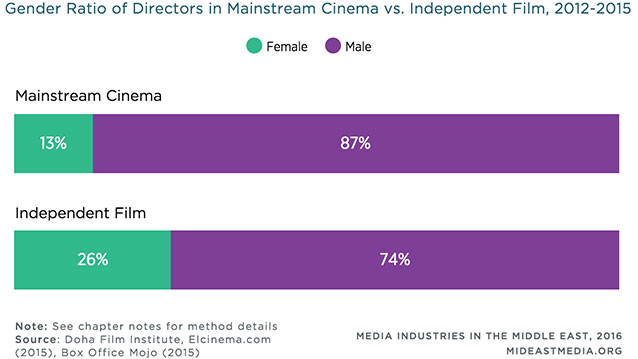DOHA, Qatar --- Independent Arab films are twice as likely to have female directors and originate in a far wider range of countries than their mainstream cinema counterparts, according to one of the findings of a new report on Middle East media by Northwestern University in Qatar (NU-Q), in partnership with the Doha Film Institute (DFI).
Once considered narrow and stagnant, the media industry is expanding and diversifying in the Middle East, according to the region-wide study, “Media Industries in the Middle East, 2016.”
Overall, the report points to a general expansion of channels and offerings across all platforms, including broadcast, print and digital media. The new content also was created by a broader diversity of producers, not usually associated with this industry in the Middle East.
“In the past few years, television channels in the region have expanded in number and in the diversity of content they carry,” said study co-author Robb Wood, director of strategic partnerships at NU-Q. “Much of the growth comes from traditional television delivered over the Internet.”
That’s a key finding because channels have become increasingly dependent on revenues from video-on-demand services, and Netflix has recently entered the Middle East, “rattling the market for content already,” Wood said.
The report is the first in several years to provide systematic and comprehensive information about the dynamics of the media and communication industries in the Middle East and in North Africa -- the MENA region--and its key characteristics.
Highlights of the analysis include:
- Pay TV subscriptions in the region grew by two-thirds from 2010-2015.
- Arabic is under-represented as a share of the world’s websites and over-represented as a share of the world’s most popular social media pages.
- While the majority of religious channels in the region remain Sunni-affiliated, Shia and Christian channels have more than doubled since 2011.
- Newspaper circulation has increased since 2010 despite sharply declining revenues.
Read news summary.
Read the full study.


